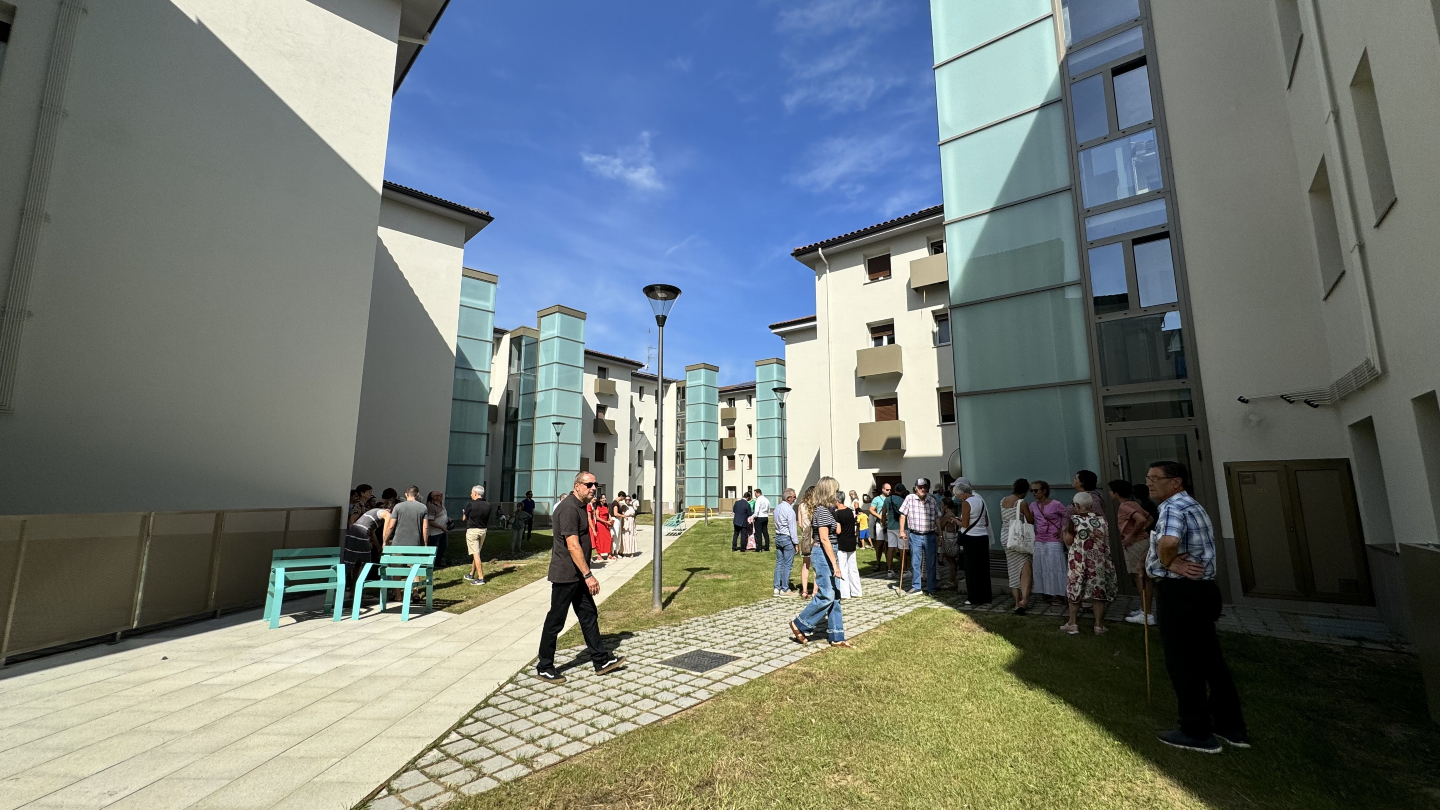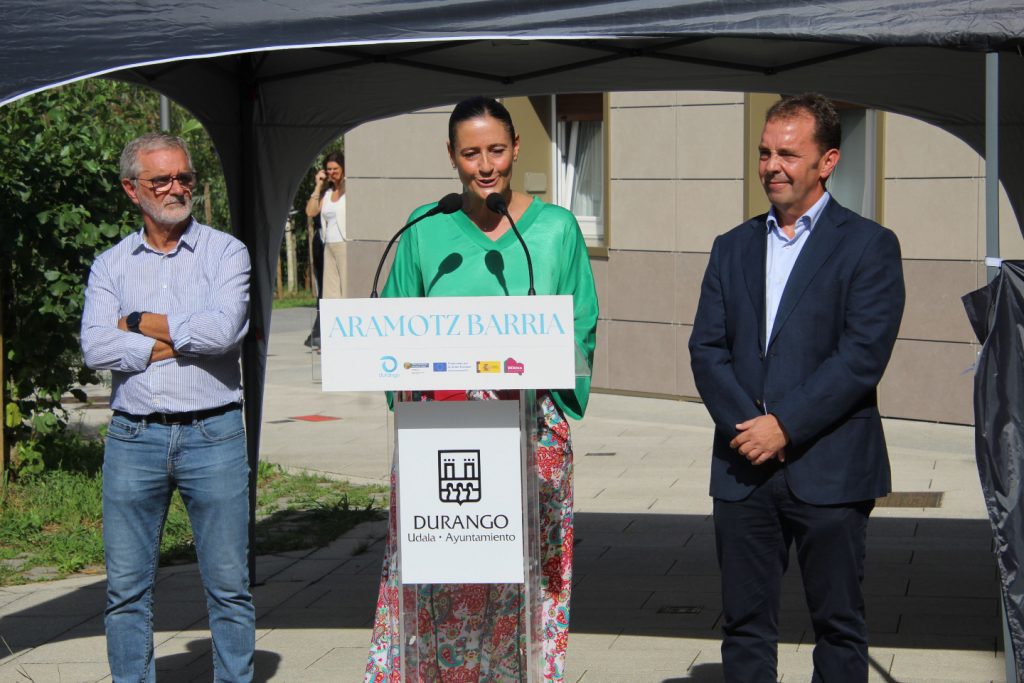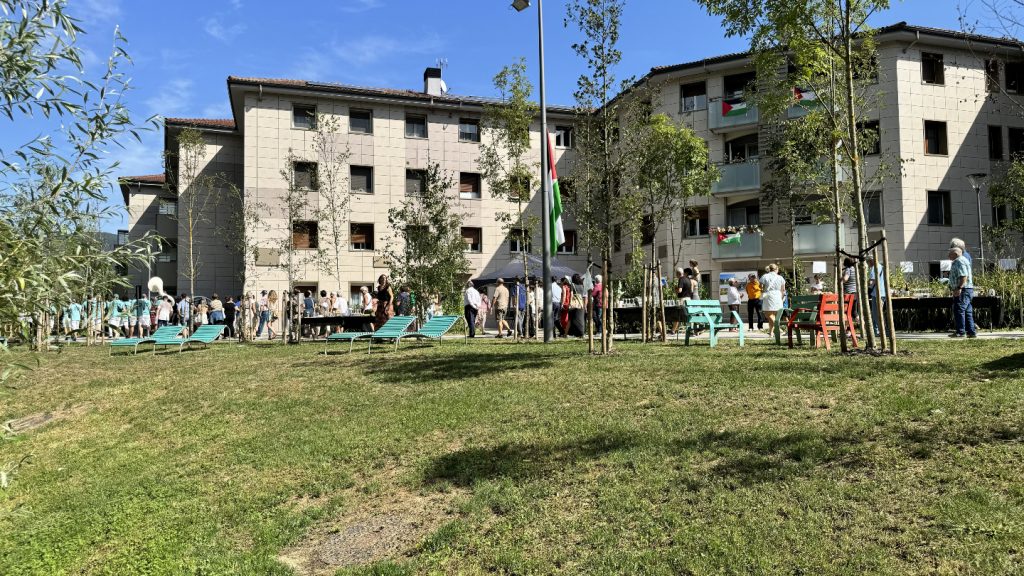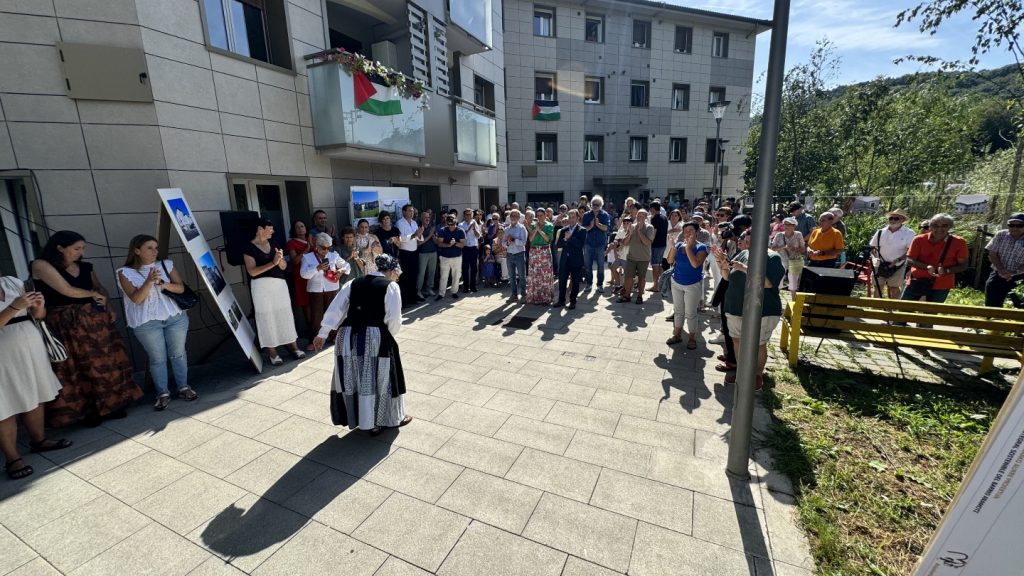
The Aramotz neighbourhood in Durango has reached a historic milestone by becoming the first neighbourhood in the BIRTUOSS-Opengela project to successfully complete its comprehensive urban regeneration process. This achievement represents a decisive step towards more sustainable, accessible and cohesive neighbourhoods, and sets a benchmark for future interventions in the Basque Country.
The intervention involved a total investment of €10,796,589, jointly financed by various entities: the Basque Government’s Department of Housing and Urban Agenda (30.47%), Next Generation EU funds (32.57%), Durango Town Council (18.42%) and direct contributions from local residents (18.54%). This joint effort reflects a shared commitment to promoting a transformation that goes beyond the physical and focuses on improving people’s quality of life.
A renovated and more sustainable neighbourhood
The project involved the renovation of 130 homes and six commercial premises, distributed across 16 buildings with ground floors and three upper floors. The work included the installation of lifts to ensure accessibility, structural reinforcement, the modernisation of facilities and comprehensive improvements to energy efficiency.
One of the keys has been the commitment to sustainability: the interventions carried out have enabled a reduction of more than 60% in non-renewable primary energy consumption, an essential requirement for accessing aid from the Recovery, Transformation and Resilience Plan. This progress not only benefits the environment, but also represents significant savings in energy costs for families.
Nature-based solutions (NBS) have also been adopted as the cornerstone of regeneration. These measures enable nature to be integrated into urban planning and respond to the challenges of climate change through sustainable drainage systems, the renaturalisation of spaces and more efficient water cycle management.
At the same time, the reurbanisation of the neighbourhood has transformed public spaces with the creation of new green areas, pedestrian streets, renovated lighting, modern street furniture and meeting places for community life. The Larrinagatxu stream has also been renaturalised, and the integration of the natural environment with the urban fabric has been improved.
The role of the technical team and neighbourhood
The neighbourhood office (Opengela), managed by the municipal public company Durango Eraikitzen and located in the neighbourhood itself, has been another key element of the project. From there, technical, administrative and social assistance has been provided to the residents’ communities, facilitating the processing of grants, the coordination of interventions and the comprehensive management of the works.
On the technical side, MAAB Arquitectura y Urbanismo was responsible for the design and planning, in collaboration with the SOIL Arquitectura del Paisaje studio. Their work has been recognised for the quality of the project and for the effort made in the comprehensive transformation of the neighbourhood. In turn, the execution of the works has been carried out by Codenor Bizkaina de Rehabilitaciones and Construcciones Intxausti, whose exemplary coordination and rigorous compliance with deadlines have been decisive for the success of the process.
One of the most notable elements of this regeneration has been the active participation of the neighbourhood. Residents have not only contributed financially, but have also been involved throughout the process, making decisions as a community, collaborating with the proximity office and contributing their vision of how they wanted the neighbourhood to be in the future.
Thanks to this involvement, Aramotz has become an example of urban regeneration co-created by citizens, institutions and technical teams, a model based on transparency, proximity and shared commitment.
A model that is expanding
The Mayor of Durango, Mireia Elkoroiribe, emphasised that ‘the comprehensive regeneration of Aramotz has been a strategic project for Durango, not only because of its budgetary scale, but also because of the profound impact it has on the daily lives of the people who live in the neighbourhood. We are talking about improving homes, making doorways accessible, and creating public spaces designed for living together, resting and sharing. We are talking about improving homes, making doorways accessible, creating public spaces designed for socialising, relaxing and sharing’.
She added that ‘it is an initiative that transforms the physical environment, yes, but above all it transforms the living conditions of hundreds of residents’. Elkoroiribe concluded by emphasising that ‘Aramotz is being reborn, and this is the result of years of joint work between institutions and the people of Durango. It is a shared source of pride, a model of a municipality that we are extending to the whole of Durango: more accessible, greener and more inclusive’.
For his part, Juan Carlos Abascal, Deputy Minister for Territorial Planning and Urban Agenda of the Basque Government, pointed out that the success achieved in Aramotz is the result of collaboration between institutions, citizens and businesses, and a clear example of how complex projects can be carried out if they are tackled in a coordinated manner.
The BIRTUOSS-Opengela project aims to comprehensively regenerate entire neighbourhoods, putting people at the centre. The regeneration of Aramotz began to take shape in 2016, through various urban studies and social diagnoses, and its experience will serve as a reference and guide for future interventions in other municipalities.
With this completion, Durango and the Basque Country are taking a decisive step towards a new urban model that is committed to accessibility, sustainability, social cohesion and citizen participation. Aramotz has not only been transformed as a neighbourhood: it has become the symbol of a paradigm shift in the way cities are conceived and experienced.




